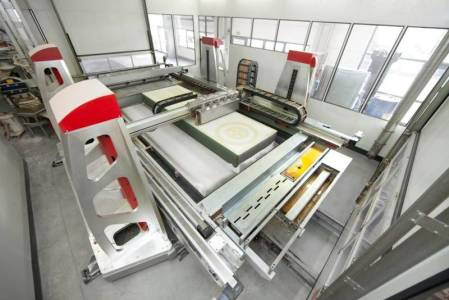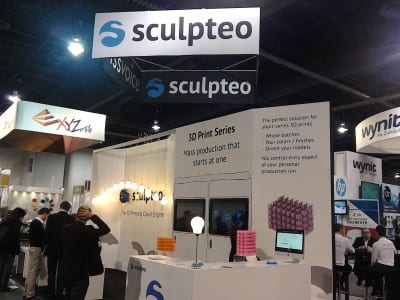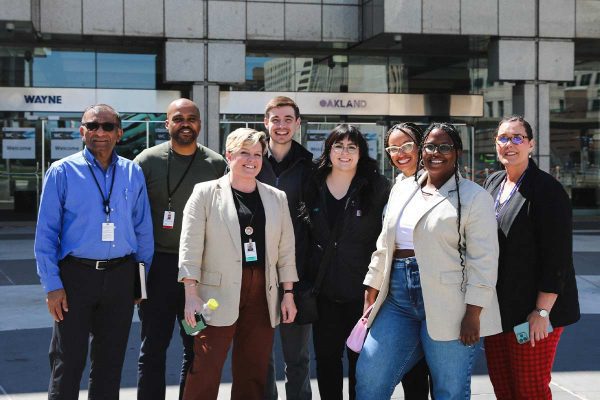Have you ever looked at a computerized, futuristic rendering of an architectural development and thought “Blue skies again! Could this sunny, idealized world really become a reality?” For some, this is a valid question during a time when many proposed architectural wonders run into funding problems and barely break ground.
Despite this, there are just as many others who become excited upon imagining something new. Usually, the presence of people in a rendering signals this excitement, the busy bustle and evolution this upcoming development will bring to the environment.
Renderings serve as a reminder that although no one can predict the future, designers and builders can implement how it takes shape — and what could come to life in decades to come are 3D printed exhibits.

Additive manufacturing, better known as 3D printing, can continuously duplicate objects quicker than traditional manufacturing. Some researchers are already improving 3D printers to produce objects faster and larger than they currently allow.
To build objects, additive manufacturing replicates 3D computer-aided design (CAD) drawings and then prints a certain material layer by layer. This works even when printing a curved structure, according to 3Dprinting.com. Most buildings created via traditional manufacturing are linear.
Presently, 3D printers are limited by their price and the fact that each 3D printer specializes in printing one material, even though there are multiple materials.
In the future, these limitations may no longer exist. In that case, 3D printing could change how exhibit houses and exhibit manufacturing companies operate. But just like a rendering, these changes are left up to individual interpretation.
Architectural advances
What goes into constructing temporary structures is not completely dissimilar from developing permanent buildings. So after leaders, starting with Architect Enrico Dini, began additive manufacturing small, single-story houses, it wasn’t too much of a stretch that exhibits in the future could be 3D printed.
Exhibit houses may manufacture and assemble exhibits in house, or they may outsource from an exhibit engineering firm that dedicates most of its business to this activity. Right now, 3D printing is a complementary technology used by some of these companies to create prototypes before mass producing new products via traditional manufacturing methods.
Commonly, prototypes are printed in plastic. Each 3D printer is designed to specifically print one material, such as metal, food, ceramic, glass, human tissue, sand, concrete and glue.
Metal, sand and concrete seem conducive to building exhibits. Sand in particular was used to additive manufacture houses in Africa and Afghanistan. Exhibit houses and exhibit manufacturing firms would likely be attracted to using lighter materials to save customers’ money.
Printing predictions
If 3D printing becomes the dominant form of manufacturing, any drawbacks could affect workers in the construction and tradeshow industries.
Granularity CEO and Founder Sebastian H. Wells said he believes that in a few decades additive manufacturing could lessen the number of construction jobs needed. What if in turn, 3D printing lessened the need for exhibit builders?
“In the new future, traditional processes of building houses will be obsolete. Consumers drive the way things are built. The consumer is going to drive additive manufacturing. I see entire skyscrapers being built. It’s still a ways away; it’s not there yet. We know how to potentially do it. It will be a few decades before it takes over the housing industry,” Wells explained.
Wells also said he believes that 3D printing exhibits are possible. Whether it’s a house or exhibit, he envisions customers going online to customize structures, such as ordering arches rather than rectangles.
Although International Special Events Society UK Chapter Director at Large James Morgan also believes that printing exhibits will be possible in the future, he pointed to exhibitors becoming more budget-conscious following the Great Recession.
Budgeted Booths
The downturn that snowballed from 2007, exploded in 2008 and ended in 2009 resulted in many companies in the tradeshow industry struggling to regain their footing and customers slashing their budgets.
“We look at the budgets for booths. If you’re doing a one-off booth, [3D printing] may not be worthwhile. If you’re doing a roadshow or are exhibiting nationally or internationally, it may work,” Morgan stated. “It could take off once one person tries it and creates an amazing environment, enters an awards contest and wins.”
If budget remains a major concern, some companies may not invest in 3D printing, which is more expensive than traditional manufacturing. Small, personal 3D printers could start at $1,000, but the prices for professional ones quickly skyrocket.
“The largest printer in the world [from Voxeljet in Germany] is a million dollars. It prints the size of a king bed. No one uses million-dollar machines in the UK,” Morgan added.
Chances are that not many exhibit houses own million-dollar printers either. There also isn’t much demand from exhibitors driving exhibit houses to partner with a 3D printer vendor. Even though Voxeljet 3D printers are costly, Morgan sees investment in 3D printing continuing.
“Voxeljet floated on the stock exchange and did very well. 3D printing is here to stay and expand. It’s only a matter of time before we find the cost to benefit events,” he explained.
Current capabilities
The speed of additive manufacturing works in its favor. Just for creating prototypes alone, traditional manufacturing takes a few days. 3D printing a prototype or a small object takes a few hours.
Large, complex 3D printed items like houses could take longer but still be built faster than when using traditional manufacturing. Researchers at University of Southern California are looking to shrink the production time of additive manufacturing a small house to 20 hours, according to 3D printing.com.

“To give you an idea, we are able to produce 3,000 iPhone cases per day,” added Marine Core Baillais, chief marketing officer, Sculpteo.
An online 3D printing service, Sculpteo additive manufactures small objects for customers who upload CAD files. The French company also creates jewelry, vases and accessories for brands conducting fashion shows in the U.S. and Europe.
The current world of 3D printing is too small and complementary to traditional manufacturing, according to Baillais, but she can envision exhibits built with large concrete 3D printers.
“It’s a very reactive technology. You are able to produce a box in one night. If something is missing on the booth, you can build it with 3D printing,” she added. “I hope that next we’ll see booths that are built with [concrete] 3D printers — it’ll only take two or three days.”
Existing or expanding?
Existing for more than 30 years, 3D printing still has a long road ahead of it. Until the technology reaches maturity and becomes more affordable and accessible, it will only be used by a small percentage of the tradeshow industry.
This past January, International CES showed that the only exhibitors using 3D printers on the show floor already had access to them.
A major 3D printer manufacturer, 3D Systems created figurines on demand at its booth. This provided an alternative booth traffic builder than the usual contests, iPad giveaways, photo booths, food and games.
Accessing its own 3D printers prior to the show, Sculpteo showed how additive manufactured objects could complement booth design. The company accessorized its exhibit with a 3D printed logo, lighting, vases and sculptures.






























